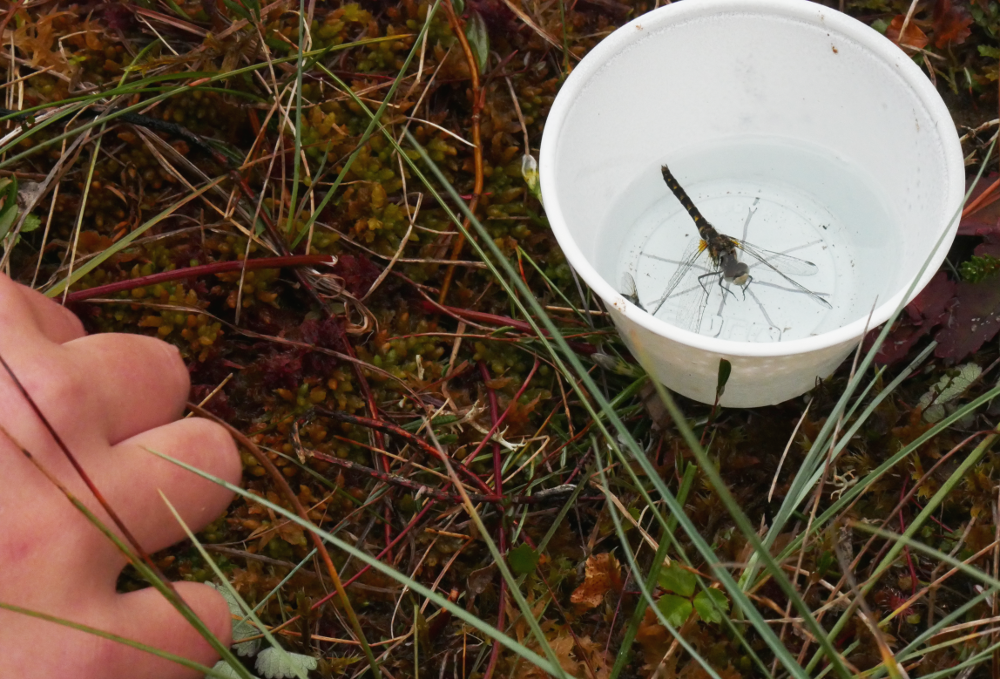
When you hear the word “pollinator,” you probably think of a bumble bee. But a lot of different insects act as pollinators, serving a vital role in the ecosystem. Bee populations in North America have been declining for decades, but the scope of that loss, especially in Alaska, is still unclear.
On Mitkof Island, the U.S. Forest Service is contributing to a statewide study of pollinators. Katie Anastas has the story.
Casey Allen and Shelby Stadler walked through the muskeg near the Raven’s Roost trailhead, checking a row of fluorescent blue, yellow and white cups.
They’re looking to see what insects have landed in them overnight. Allen picked up one of the cups, with three flies floating inside.
“So what we have here is about a quarter full of water with some dish soap,” she said. “The dish soap is there to break the water surface tension. Without that, a bug that lands is going to fall right in and sink and not be able to escape.”
These traps are part of a statewide effort to measure pollinators. And it’s not just bees: a lot of insects act as pollinators, including wasps, flies, dragonflies and butterflies. Stadler said those other pollinators deserve attention, too.
“I think honey bees are sort of the poster child or the mascot for pollinators,” she said. “But our wild pollinators are the ones who do a lot of the heavy lifting also, sort of behind the scenes.”
Allen was surprised to see so many different kinds of insects in the cups. She expected to see some bees and flies. One cup had a dragonfly, and another had what she thinks is a parasitic wasp.
Allen and Stadler collect the cups, remove the insects, and send the samples to the Alaska Center for Conservation Science at the University of Alaska Anchorage. The university is leading the project, called the Alaska Bee Atlas. It’s part of a national effort to conserve bee populations throughout the country.
Alaska’s 22 bumble bee species have been well-documented. But little is known about solitary bees. Those are bees that don’t create colonies or hives, and don’t have a separate system of workers and queens. Of the 4,000 bee species in North America, 98% of them are solitary bees.
Stadler said the goal of the project is to collect more comprehensive data on all pollinator species, including those here on Mitkof Island. If they can keep track of the kinds of pollinators in the area, they can be on alert if a certain population starts to decline.
“Maybe we’re doing something to prevent it from coming here or doing something to kill it,” she said. “We’re trying to figure out what that might be so we can fix it.”
Declines in pollinator species have been attributed to habitat loss, pesticide use, invasive plant species and climate change.
Allen said bees and other pollinators are important for the entire food chain. Blueberries are just one example of the kinds of fruit we wouldn’t have on Mitkof without pollinators.
“If these bugs aren’t out there pollinating those plants, we don’t have our blueberries,” she said. “That’s sad for us, but more importantly, the animals around here that depend on them don’t have that. Pollinator health doesn’t just affect how bugs are doing or how plants are doing. It affects bears, it affects birds. It’s absolutely a ripple effect. These pollinators affect every single part of the ecosystem.”









